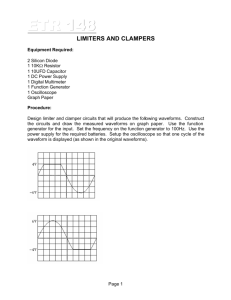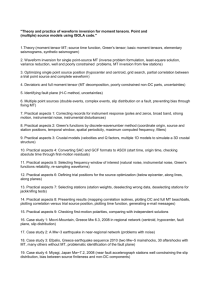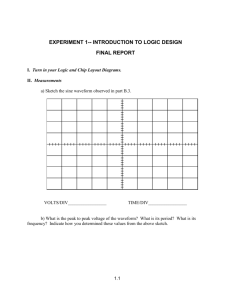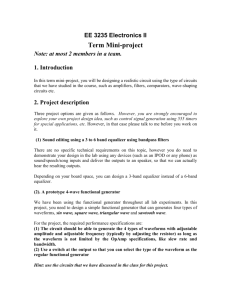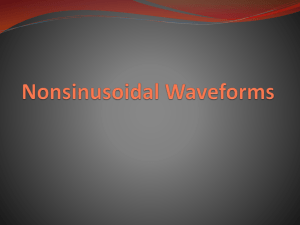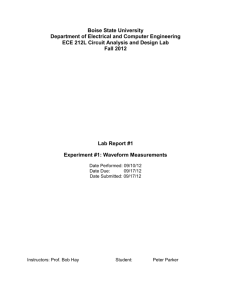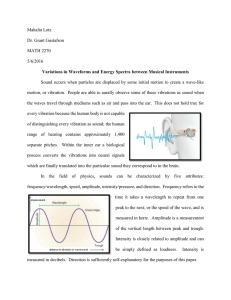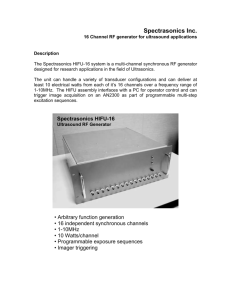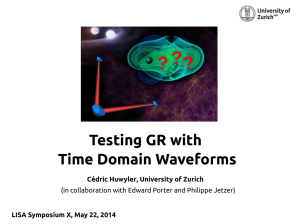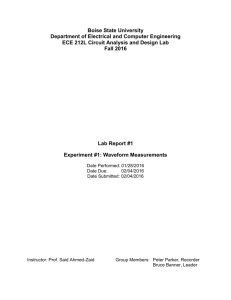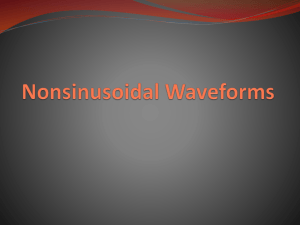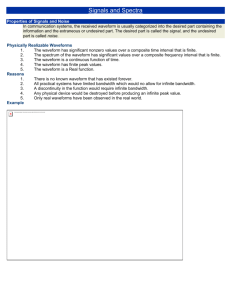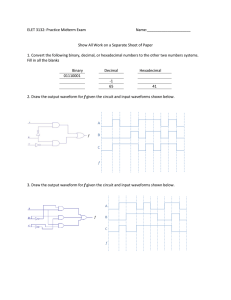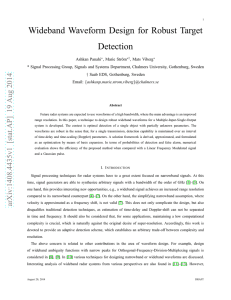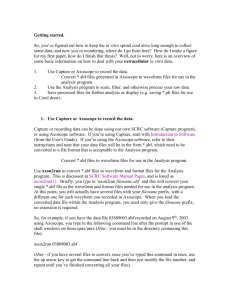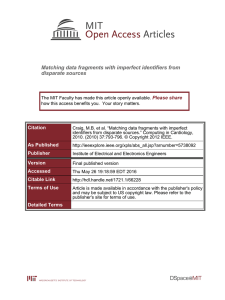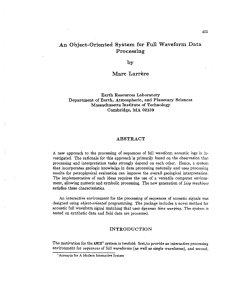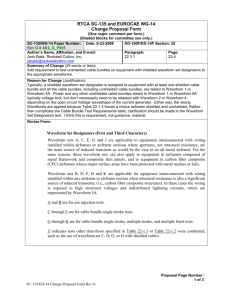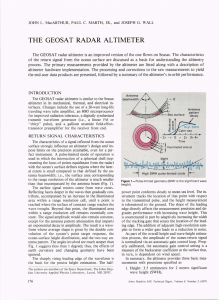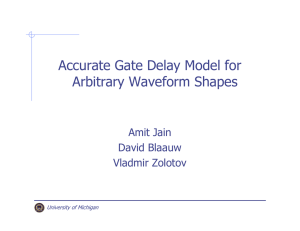Analysis of Radar Altimeter Waveform
advertisement
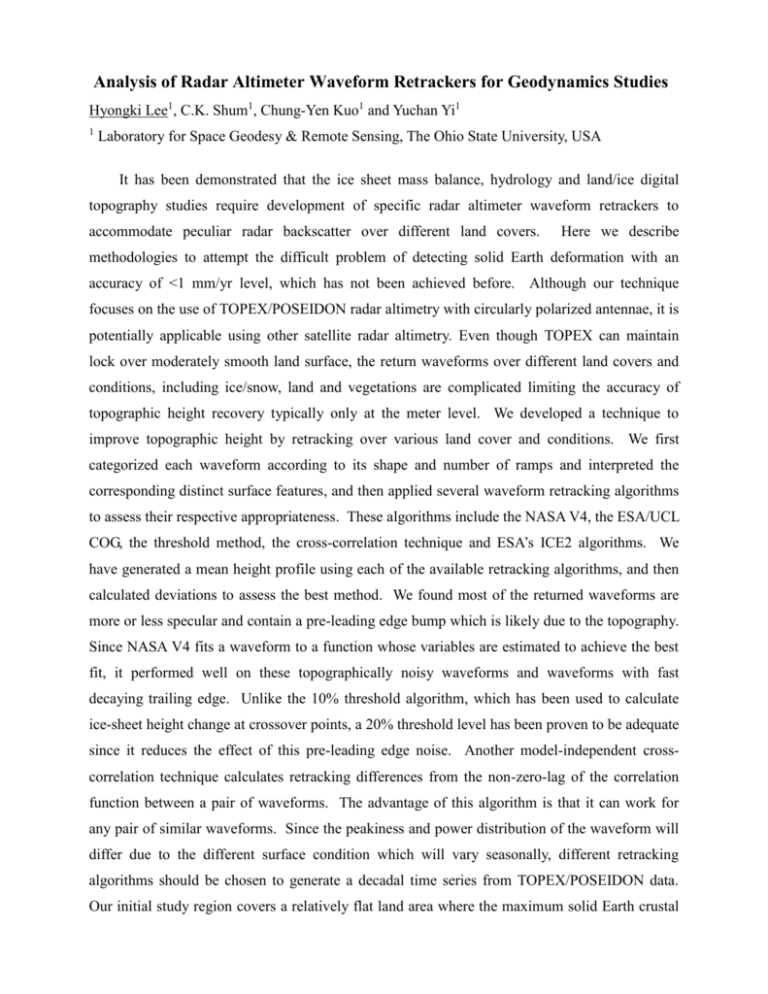
Analysis of Radar Altimeter Waveform Retrackers for Geodynamics Studies Hyongki Lee1, C.K. Shum1, Chung-Yen Kuo1 and Yuchan Yi1 1 Laboratory for Space Geodesy & Remote Sensing, The Ohio State University, USA It has been demonstrated that the ice sheet mass balance, hydrology and land/ice digital topography studies require development of specific radar altimeter waveform retrackers to accommodate peculiar radar backscatter over different land covers. Here we describe methodologies to attempt the difficult problem of detecting solid Earth deformation with an accuracy of <1 mm/yr level, which has not been achieved before. Although our technique focuses on the use of TOPEX/POSEIDON radar altimetry with circularly polarized antennae, it is potentially applicable using other satellite radar altimetry. Even though TOPEX can maintain lock over moderately smooth land surface, the return waveforms over different land covers and conditions, including ice/snow, land and vegetations are complicated limiting the accuracy of topographic height recovery typically only at the meter level. We developed a technique to improve topographic height by retracking over various land cover and conditions. We first categorized each waveform according to its shape and number of ramps and interpreted the corresponding distinct surface features, and then applied several waveform retracking algorithms to assess their respective appropriateness. These algorithms include the NASA V4, the ESA/UCL COG, the threshold method, the cross-correlation technique and ESA’s ICE2 algorithms. We have generated a mean height profile using each of the available retracking algorithms, and then calculated deviations to assess the best method. We found most of the returned waveforms are more or less specular and contain a pre-leading edge bump which is likely due to the topography. Since NASA V4 fits a waveform to a function whose variables are estimated to achieve the best fit, it performed well on these topographically noisy waveforms and waveforms with fast decaying trailing edge. Unlike the 10% threshold algorithm, which has been used to calculate ice-sheet height change at crossover points, a 20% threshold level has been proven to be adequate since it reduces the effect of this pre-leading edge noise. Another model-independent crosscorrelation technique calculates retracking differences from the non-zero-lag of the correlation function between a pair of waveforms. The advantage of this algorithm is that it can work for any pair of similar waveforms. Since the peakiness and power distribution of the waveform will differ due to the different surface condition which will vary seasonally, different retracking algorithms should be chosen to generate a decadal time series from TOPEX/POSEIDON data. Our initial study region covers a relatively flat land area where the maximum solid Earth crustal uplift of ~1 cm/yr due primarily to the Glacial Isostatic Adjustment centering in the Hudson Bay over the former Laurentide ice sheet. This paper provides examples of the resulting land deformation signals and results comparing with ENVISAT ICE2 measurements and incidental ICESat laser altimeter data. Finally, we provide an assessment of the feasibility of the technique to be applicable to land regions with larger slope, for example, Patagonia.
